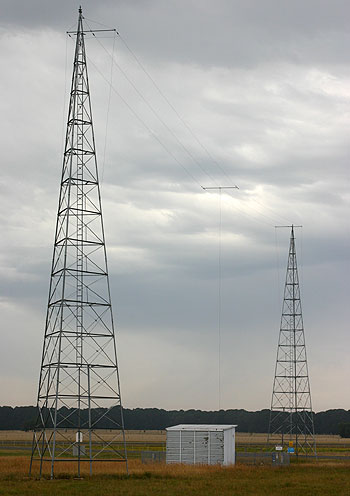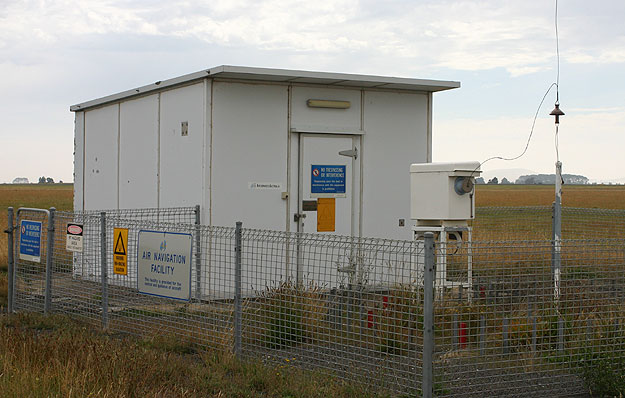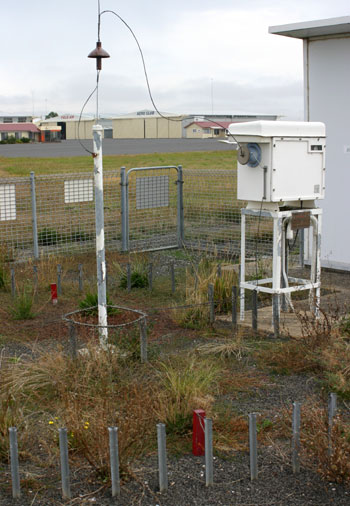
Non Directional Beacons (NDBs) are still the most ubiquitous radio navigation aid in use in Australia, being used primarily for terminal navigation and non-precision instrument approaches. Becasue they are simple, reliable and relatively inexpensive, NDBs are found at virtually all country aerodromes of significance.
Although being operationally supplanted by GPS Non Precision Approaches (GPS NPA - as of 2004 known as RNAV GNSS approaches), NDBs seem set to remain part of the aviation scene for some time to come.
These photos show the Ballarat NDB, photographed in March 2005. This NDB is a very typical installation.
At left are the two towers which support transverse cables, which in turn suspend the vertical antenna. In between the towers is the transmitter hut.
The
photo below shows the transmitter hut which contains duplicated transmitters.
These days all NDBs are 'transistorised', but for some time in the 1970s airways
navigation charts indicated those NDBs that had been upgraded from valve equipment
to transistorised equipment with the notation NDB(T).
In front of the transmitter hut is the aerial coupling unit which couples the RF energy from the transmitter into the antenna, which can be seen at far right.


The photo at left shows the aerial coupling unit in more detail. The fitting on the front face of the unit, from which the antenna feed emerges, is a lighting arrestor.
Although not very clear in this reproduction, a series of wires radiate from the metal ring at the base of the antenna anchor to each of the metal pegs arranged in a circle around the antenna, in order to provide a ground plane.
(Photos: Phil Vabre/CAHS collection)
Click
here to see a photo of an earlier NDB
Back to the main Communications & Navigation index